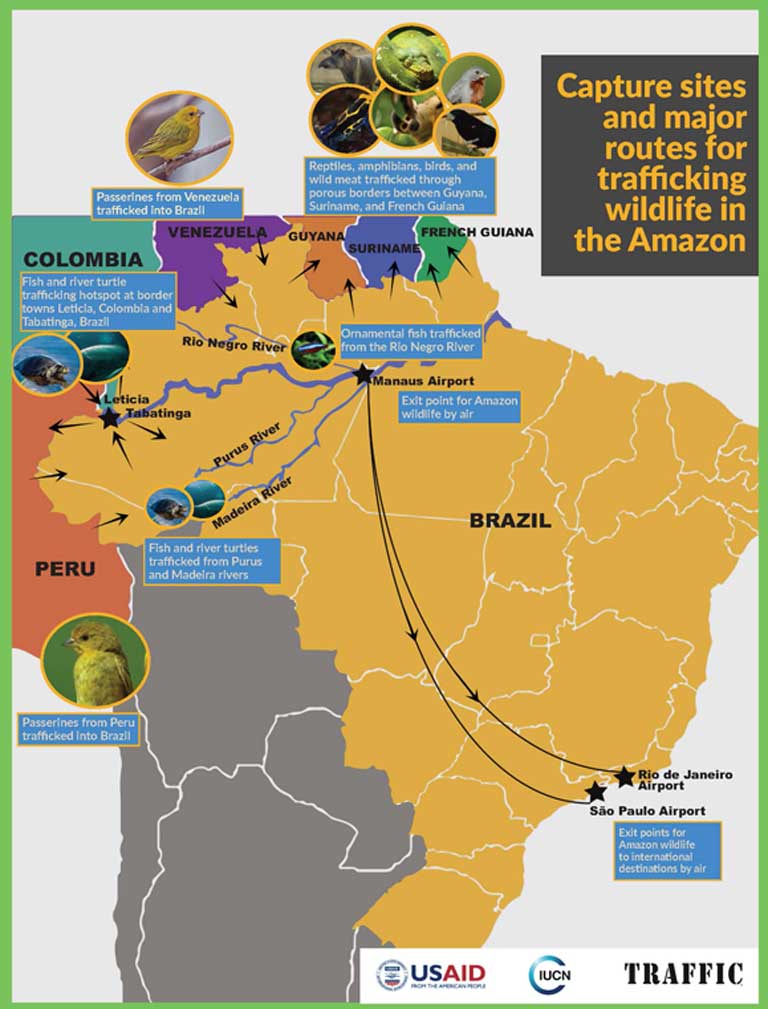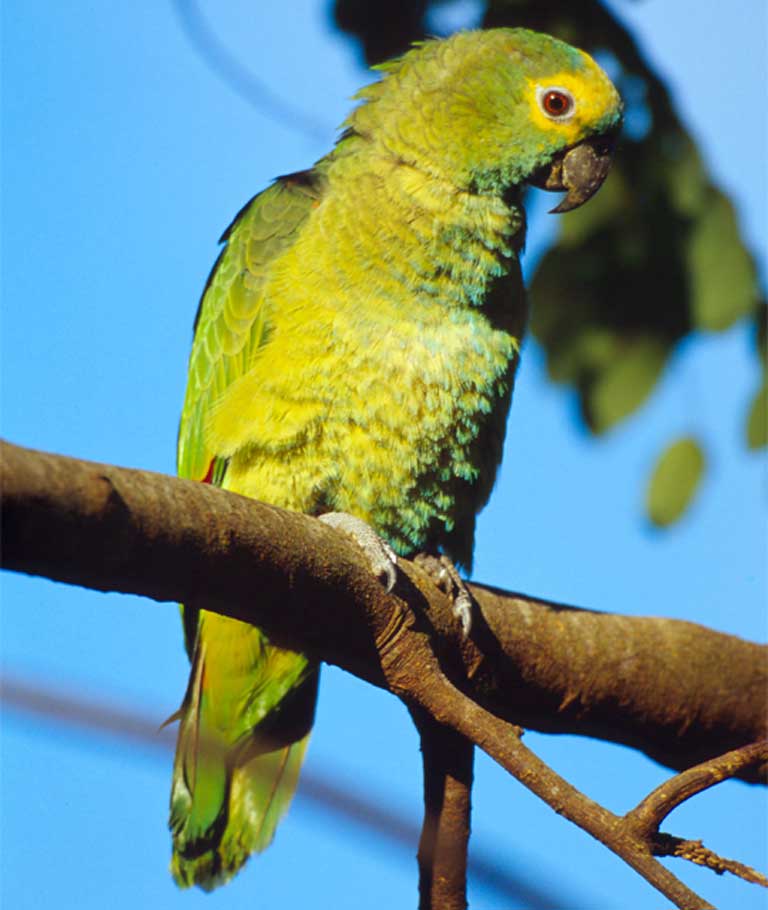- A new 140-page report is shining a bright light on illegal wildlife trafficking in the Brazilian Amazon. The study finds that millions of birds, tropical fish, turtles, and mammals are being plucked from the wild and traded domestically or exported to the U.S, EU, China, the Middle East and elsewhere. Many are endangered.
- This illicit international trade is facilitated by weak laws, weak penalties, inadequate government record keeping, poor law enforcement — as well as widespread corruption, bribery, fraud, forgery, money laundering and smuggling.
- While some animals are seized, and some low-level smugglers are caught, the organizers of this global criminal enterprise are rarely brought to justice.
- The report notes that this trafficking crisis needs urgent action, as the trade not only harms wildlife, but also decimates ecosystems and puts public health at risk. The researchers point out that COVID-19 likely was transmitted to humans by trafficked animals and that addressing the Brazilian Amazon wildlife trade could prevent the next pandemic.

The Brazilian Amazon is hemorrhaging illegally traded wildlife according to a new report released Monday. Each year, thousands of silver-voiced saffron finches and other songbirds, along with rare macaws and parrots, are captured, trafficked and sold as pets. Some are auctioned as future contestants in songbird contests. Others are exported around the globe.
Fish bound for ornamental home aquariums also pour out of the Amazon, including the tiny, iridescent blue and red cardinal tetra. Arapaima fish — also known as pirarucù, one of the world’s largest freshwater fish — are caught illegally, “laundered” amidst captive-bred specimens and shipped to the U.S. in large numbers.
Other fish are headed for the dinner table, as are freshwater turtles and their eggs, while tapir, peccary and other mammals are sold in Brazil as bushmeat. Jaguar teeth, heads and skins are shipped to China.
Millions of animals are being illegally captured and traded live and in parts in a thriving Brazilian black market, according to the report, produced by TRAFFIC, a UK-based nonprofit that studies the trade. “The pervasive and uncontrolled capture of wild animals and plants for the illegal trade is having grave consequences for Brazilian biodiversity, the national economy, the rule of law and good governance,” it says.



 Trends remain difficult to track, however, since seizure data alone represents a mere fraction of animals illegally pulled from the wild. But it is clear from existing data that there is an uptick in smuggling of some species, including jaguars: seizures increased by 200% from 2012 to 2018.
Trends remain difficult to track, however, since seizure data alone represents a mere fraction of animals illegally pulled from the wild. But it is clear from existing data that there is an uptick in smuggling of some species, including jaguars: seizures increased by 200% from 2012 to 2018.



